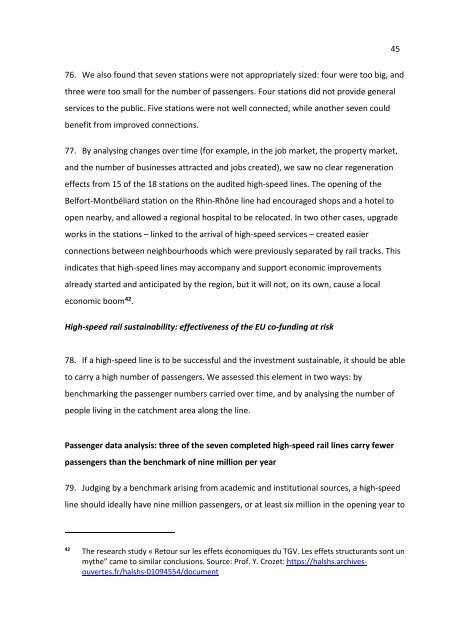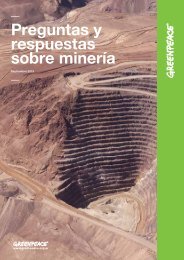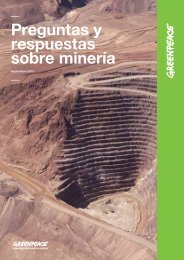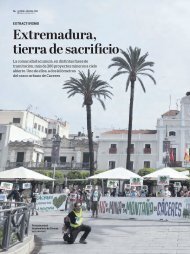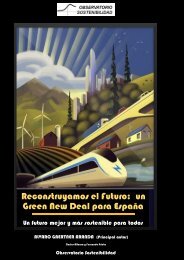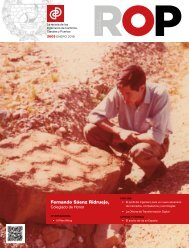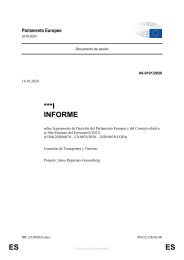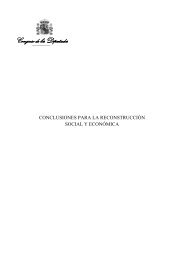La Red de Alta Velocidad Europea: Más un mosaico poco efectivo que una realidad
El presente comunicado de prensa tiene por objeto ofrecer una síntesis del contenido esencial del informe especial del Tribunal de Cuentas Europeo. El texto íntegro del informe puede consultarse en www.eca.europa.eu.
El presente comunicado de prensa tiene por objeto ofrecer una síntesis del contenido esencial del informe especial del
Tribunal de Cuentas Europeo.
El texto íntegro del informe puede consultarse en www.eca.europa.eu.
Create successful ePaper yourself
Turn your PDF publications into a flip-book with our unique Google optimized e-Paper software.
45<br />
76. We also fo<strong>un</strong>d that seven stations were not appropriately sized: four were too big, and<br />
three were too small for the number of passengers. Four stations did not provi<strong>de</strong> general<br />
services to the public. Five stations were not well connected, while another seven could<br />
benefit from improved connections.<br />
77. By analysing changes over time (for example, in the job market, the property market,<br />
and the number of businesses attracted and jobs created), we saw no clear regeneration<br />
effects from 15 of the 18 stations on the audited high-speed lines. The opening of the<br />
Belfort-Montbéliard station on the Rhin-Rhône line had encouraged shops and a hotel to<br />
open nearby, and allowed a regional hospital to be relocated. In two other cases, upgra<strong>de</strong><br />
works in the stations – linked to the arrival of high-speed services – created easier<br />
connections between neighbourhoods which were previously separated by rail tracks. This<br />
indicates that high-speed lines may accompany and support economic improvements<br />
already started and anticipated by the region, but it will not, on its own, cause a local<br />
economic boom 42 .<br />
High-speed rail sustainability: effectiveness of the EU co-f<strong>un</strong>ding at risk<br />
78. If a high-speed line is to be successful and the investment sustainable, it should be able<br />
to carry a high number of passengers. We assessed this element in two ways: by<br />
benchmarking the passenger numbers carried over time, and by analysing the number of<br />
people living in the catchment area along the line.<br />
Passenger data analysis: three of the seven completed high-speed rail lines carry fewer<br />
passengers than the benchmark of nine million per year<br />
79. Judging by a benchmark arising from aca<strong>de</strong>mic and institutional sources, a high-speed<br />
line should i<strong>de</strong>ally have nine million passengers, or at least six million in the opening year to<br />
42<br />
The research study « Retour sur les effets économi<strong>que</strong>s du TGV. Les effets structurants sont <strong>un</strong><br />
mythe” came to similar conclusions. Source: Prof. Y. Crozet: https://halshs.archivesouvertes.fr/halshs-01094554/document


